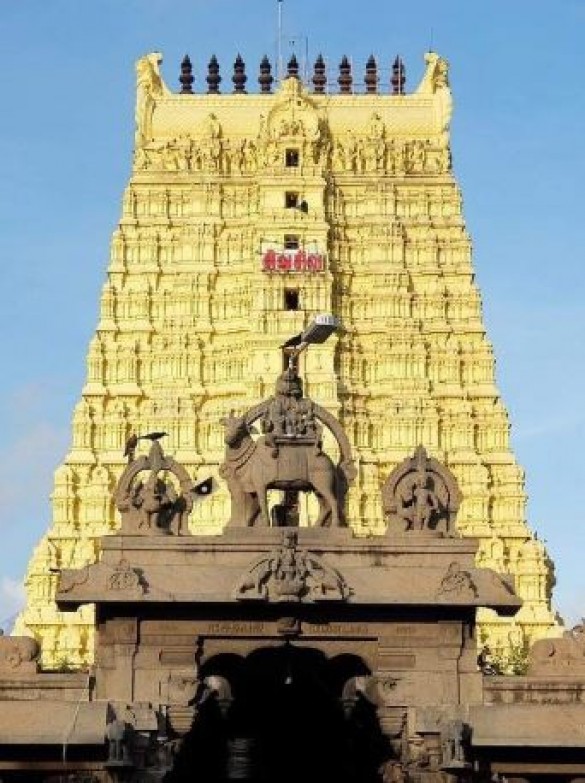
The Ramanathaswamy Temple, located in the town of Rameswaram in the state of Tamil Nadu, India, is one of the most significant and revered Hindu temples in the country. Spread over an area of 15 acres, this magnificent temple is dedicated to Lord Shiva and is considered one of the 12 Jyotirlingas (divine abodes of Lord Shiva).
The Ramanathaswamy Temple dates back thousands of years. According to Hindu mythology, Lord Rama, along with his wife Sita and his loyal devotee Hanuman, worshipped Lord Shiva here to seek blessings and forgiveness after defeating the demon king Ravana in the epic Ramayana. Legend has it that Lord Rama built a bridge, known as Ram Setu or Adam's Bridge, across the ocean to reach Sri Lanka, and on his way back, he installed a lingam (an abstract representation of Lord Shiva) at Rameswaram. It is believed that the lingam in the Ramanathaswamy Temple is the same one installed by Lord Rama, making it a sacred and pilgrimage site for devotees.
Also Read: Vadakkumnathan Temple: Classic Architecture of Kerala
The Ramanathaswamy Temple is a splendid example of Dravidian architecture. The temple complex comprises several intricately carved pillared corridors, majestic gateways, and towering gopurams (ornate entrance towers). The main gopuram, called the Rajagopuram, stands at a height of 53 meters and is adorned with exquisite sculptures depicting various scenes from Hindu mythology. The temple also houses several mandapams (halls) such as the Anuppu Mandapam, Nandi Mandapam, and Kalyana Mandapam, each displaying unique architectural features and artistic craftsmanship.
The Ramanathaswamy Temple is its sacred bathing tank, known as Agni Theertham, situated on the eastern side of the temple. Pilgrims believe that taking a dip in these holy waters before entering the temple premises will cleanse them of their sins. The temple also has 22 other theerthams (tanks) within its complex, and it is customary for devotees to visit and bathe in each of them as part of their spiritual journey.
Also Read: Kailasanathar Temple: Oldest Shiva Temple
The Ramanathaswamy Temple is not only a place of worship but also a center of cultural and religious significance. It attracts thousands of devotees from all over the country, especially during the auspicious festival of Mahashivaratri. During this time, the temple is adorned with vibrant decorations, and various rituals and ceremonies are performed in honor of Lord Shiva. The temple complex comes alive with devotional music, dance performances, and spiritual discourses.
Visiting the Ramanathaswamy Temple is an experience that goes beyond religious beliefs. The serene and spiritual atmosphere, coupled with the architectural grandeur, captivates visitors and fills them with a sense of awe and reverence. The temple stands as a testament to the rich cultural heritage of Tamil Nadu and serves as a reminder of the enduring faith and devotion of the people.
Also Read: Tirupati Balaji: Gratitude To The Deity
In recent years, the temple authorities have taken initiatives to improve the facilities and infrastructure for the convenience of pilgrims. The town of Rameswaram has witnessed significant development, with better connectivity and accommodation options available for visitors.
The Ramanathaswamy Temple is not just a religious site but also a symbol of art, culture, and spirituality. Its historical significance, architectural brilliance, and spiritual aura make it a must-visit destination for devotees and tourists alike.
Also Read: Bhadrachalam Temple: Principal Deity Rama